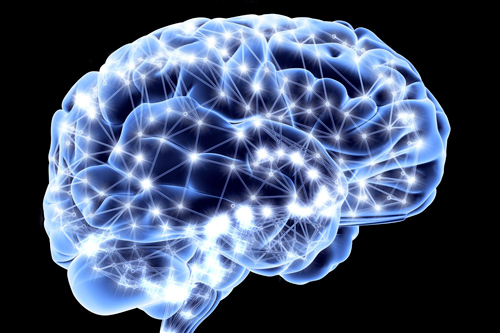Not counting water, tea is the most widely consumed beverage worldwide. With a history that goes back 5,000 years as medicine and over 1,000 as a simple beverage the data on tea drinking is pretty astounding. According to the Tea Association of the U.S.A., “On any given day, over 158 million Americans are drinking tea.” Millennials represent the largest market segment with 87% of them being prone to tea time. In all, Americans annually consume 80 billion servings of tea (more than 3.6 billion gallons), 84% of which is black, 15% green and the remainder oolong, white and dark. Green tree leads the growth chart at the highest rate: up 60% over the last 10 years.
Regardless of its color all tea originates from the same source: the evergreen shrub or small tree, Camellia sinensis—the name literally translates as “tea flower.” What differentiates teas is the method of processing and degree of oxidization (how much the tea leaves are exposed to oxygen.) The more oxidization the darker the tea; the smaller the amount of oxidization the greater amount of antioxidants the tea retains. With the least amount of fermentation white tea retains the highest concentration of antioxidants (studies suggest as much as three times more than green tea) and has been proved to be active in retarding the growth of bacteria.
While the lighter teas don’t yet own the market research published in Psychopharmacology, Phytotherapy Research and Journal of Medicinal Food (among others) proves that if you’re interested in brain health you should be playing your part in increasing the green and white tea market share. The former study showed that green tea extract benefits “cognitive functioning [through affecting]…working memory processing at the neural system level by suggesting changes in short-term plasticity of parieto-frontal brain connections.” The latter study proved that the natural combination of green tea extract and L-Thianine improves both memory and attention. Specific benefits of drinking green tea include:
Caffeine: As a stimulant caffeine blocks the neurotransmitter adenosine, a chemical that builds up in your brain over the course of the day to produce a tired effect. The caffeine in green tea (bound with L-theanine) gently increases the firing activity of neurons and increases the concentration of dopamine and norepinephrine, neurotransmitters that significantly impact body movement, decision-making, mood, motivation, attention and the suppression of neuroinflammation.
L-Theanine: An amino acid primarily found in specific plants and fungal species, L-Theanine binds with caffeine to neutralize its effects. As one of many relaxation techniques for anxiety options, L-Theanine is particularly beneficial because it increases GABA activity, an inhibitory neurotransmitter that has anti-anxiety consequences. The result: all of the mind-enhancing properties of caffeine without any jittery symptoms. In addition, electroencephalogram (EEG) tests that map the electrical activity of the brain show that L-Theanine (easily able to cross the brain barrier) smoothes out brainwaves so that the mind is calm yet and alert with increased alpha wave production and amplified problem-solving capabilities.
Catechins: A natural phenol and antioxidant, catechins (higher in the lighter teas) have been the subject of many recent studies proving their beneficial effects in protecting neurons, an activity that can reduce the likelihood of dementia or Alzheimer’s.
If all the benefits are making you wonder how much to start drinking and how often the recommendations are clear: Research recently presented at the 2015 International Conference on Alzheimer’s and Parkinson’s Diseases showed that participants who benefited from green tea consumption were downing the beverage one to six days a week. According to both Harvard Health Publications and University of Maryland Medical Center three cups per day should do the trick (double that if you’re drinking decaffeinated tea). You can boost the benefit of any tea by adding a dash of vitamin C (lemon or orange juice taste the best), which increases the amount of catechins available for the body to absorb.
In the world of beverages coffee may have the higher profile, the better rep and more of the cool factor when it comes to branding, but tea consumption has some pretty cool supporters too. Sean Connery, Pierce Brosnan, and Daniel Craig are known to have the tea habit, plus famous musicians like Ozzy Osbourne (“I f***ing love Yorkshire Gold [tea].”), Mick Jagger (“I got nasty habits; I take tea at three.”) and Lady Gaga. Authors, too, slug back tea from the likes of C S Lewis to Henry James to Chaim Potok. But it might be the English actor, dramatist and stage director, Arthur Wing Pinero, who sums up the benefit of tea the best when he said, “Where there’s tea there’s hope.” Pinero probably wasn’t thinking about the brain health benefits of tea when he made that remark, but eighty years after his death the words still ring true.
Click here to get inspired by Rose’s easy steps to positively change your mind




2 Comments
Kathleen Fink
Michele, I am a graduate student in Mindfulness Studies at Lesley University where I am doing much of my research and writing on the many benefits I experienced from my long engagement with Japanese Tea Ceremony. I would be interested in the specific references to the studies you mention regarding the cognitive benefits of green and white tea.
Gianna Caiola
Hi Kathleen,
This sounds like such an interesting study! Feel free to contact Michele directly here
Thanks for your comment & Good Luck!
RWM Staff